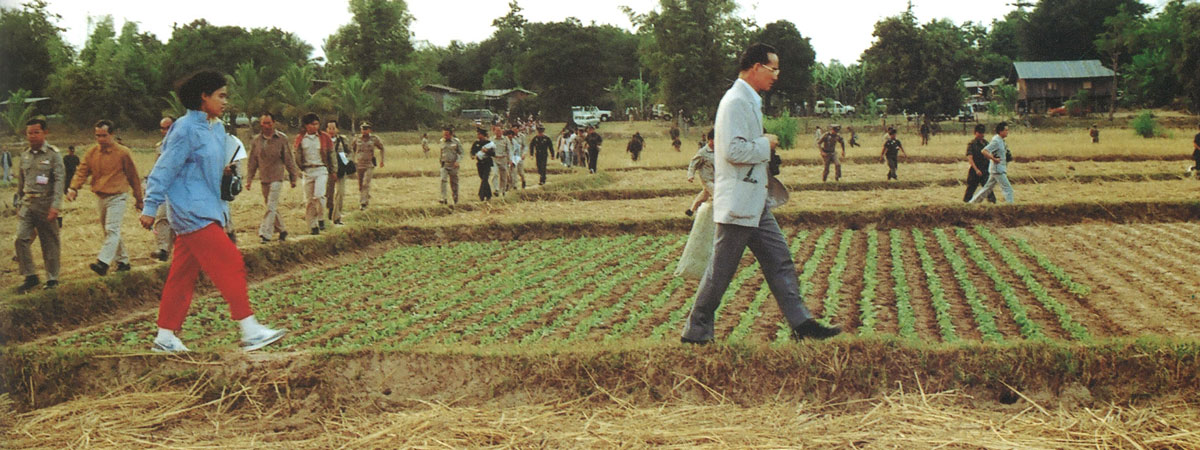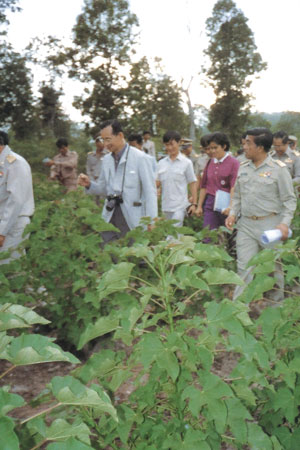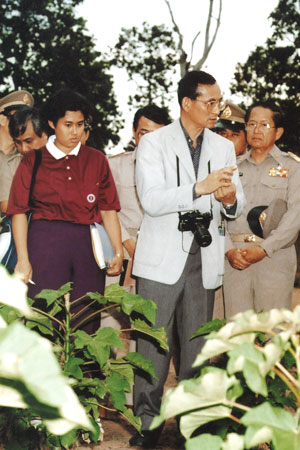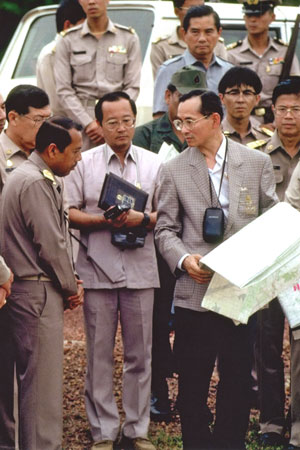

In the early 1970S, His Majesty King Bhumibol Adulyadej The Great had traveled every year to Daksin Palace in Narathiwat province for a temporary stay and to perform his duties in relation to the royal projects.
As a result of these regular visits, His Majesty acquired knowledge and a better understanding of local problems, particularly flooding and soil acidity. In order to improve soil conditions in the aftermath of the flooding, His Majesty began to seek an approach to soil acidity.
The Soil Aggravation Project began in 1974 There, His Majesty found evidence of strong acidity in the swamp soil in this province, making it difficult to develop the swampland for cultivation, due to the high levels of sulfuric acid present in the soil.
To overcome this high soil acidity problem, His Majesty suggested using a "Klaeng Din", or "Tricking the Soil" methodology which involves rendering the soil strongly acidic by alternately flooding and drying the soil to accelerate the reaction of pyrite, to a point where the soil becomes extremely acidic.


He then determined the most suitable way to combat the acidity by controlling the ground-water level, de-acidifying the soil by applying 1-4 tons of lime per rai, mixed with topsoil, which is then followed by flooding the soil again and planting an appropriate crop selection, followed by research and analysis on improvements to the acidic soil achieved and areas indicating the highest level of productivity.







